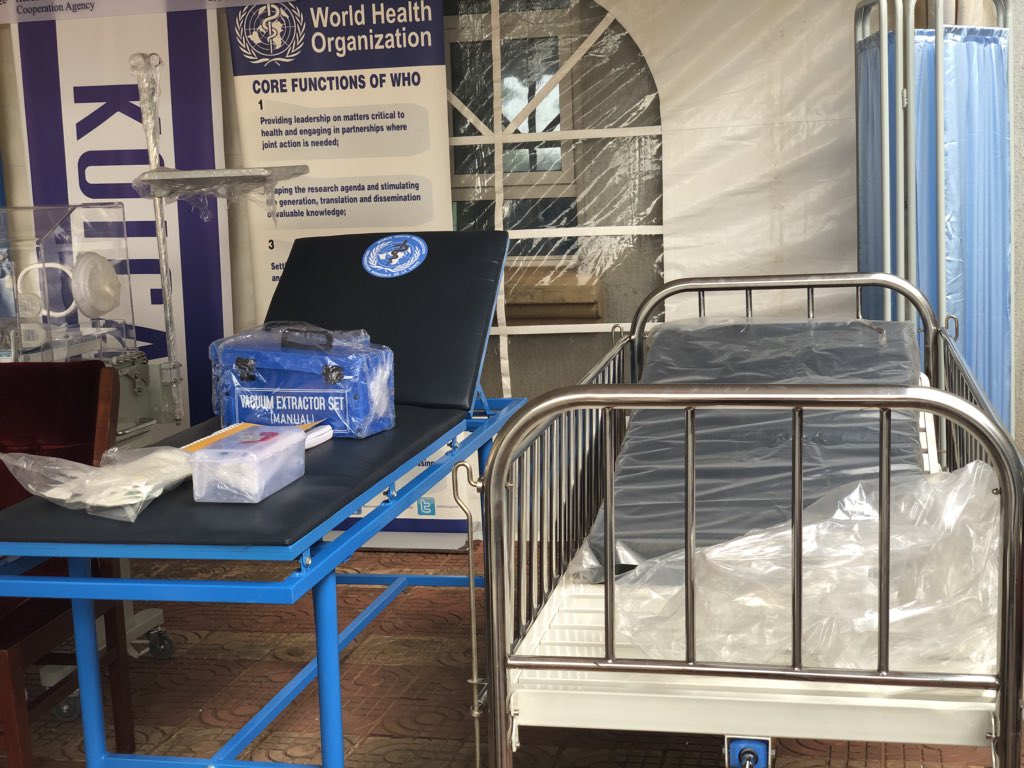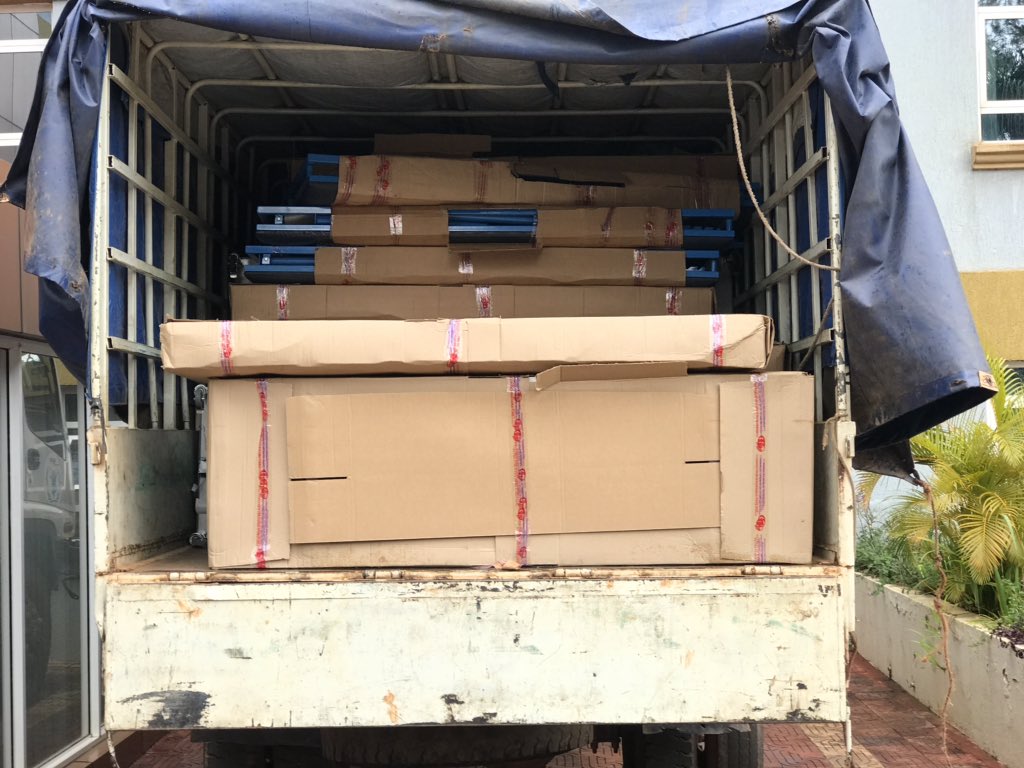An assortment of medical equipment valued at Shs 1 billion (USD 257,000) has been donated to health facilities in the two districts of Iganga and Kamuli to improve the quality of treatment for pregnant mothers.
The items which were Monday handed over to the Ministry of Health by the Korean International Cooperation Agency (KOICA) is expected to further bring down the prevalence of maternal and infant mortality which is higher in Kamuli and Iganga.
They were handed over to the Permanent Secretary in the Ministry of Health, Dr Diana Atwine by Sang Chul Kim, the Project Coordinator on behalf of KOICA, at an event held at the World Health Organization (WHO) country office in Kololo.
Among the equipment donated are 4 neonatal incubators, 14 pulse oxymeters, 34 examination beds with back rest, 40 mercury blood pressure machines, 128 4-tier patient screens.
In addition, government received 94 adult ambubags, 80 normal delivery sets, 82 adult hospital beds, 20 pediatric hospital beds and 76 medicine trolleys. The equipment will be distributed among Health facilities at Level Four and above in the two districts.
An additional set of equipment valued at Shs 1.56 billion (USD 404,000) will also be delivered in the next one to two months. This will make the total cost of equipment Shs 2.38 billion.
Speaking at the event, Dr Diana Atwine said commitment to improve quality of care towards achieving universal health coverage and reducing preventable maternal mortality and new born still births.
“This is equipment that will really help us bridge the gap and also improve the quality of care in these two districts. We also expect to reach out to 496,000 people in Iganga and 529,000 in Kamuli especially the children and women,” Dr Atwine said.
She however strongly cautioned the health workers and supervisors in the respective districts to properly maintain the equipment.
“When we receive these equipment, I have several times visited facilities and found that the equipment that is donated is property of the Government of Uganda”.
“We expect this equipment to be well engraved and accounted for. Treat this property as your own”.
She warned against keeping the items in the stores to gather the dust instead of utilizing them for their intended purpose.
She added; “With incubators, we don’t now expect to see you referring neonates. I don’t want to find incubators in the store. We want now to strengthen neonatal services in Iganga and Kamuli so that we decongest Mbale and Jinja”.
Beyond the equipment, KOICA has also been involved in the training of health workers on maternal and new born health care for the last 8 months. This was aimed at helping the Ministry of Health to implement key aspects of the health systems strengthening.
The WHO Country Representative in Uganda, Dr Jonas Tegegn Woldemariam said the project is aligned with the 3 WHO targets of reaching 3 billion people with service coverage.
The 2016 Uganda Demographics and Health Survey figures indicated that about 6,000 women ad 45,000 newborns die annually in Uganda due to issues related to pregnancy. The same figures showed that Busoga region in which Kamuli and Iganga are locate had poor maternal and child health indicators.
In the districts, contraceptive use by married women, 4th antenatal visit attendance at delivery and child immunization coverage were found to be very low while the unmet need for family planning was high.
It is these worrying statistics, Dr Woldemariam said, that informed the basis of the KOICA funded project.
As a result, he said, “WHO has partnered with the Ministry of Health to build capacity of 640 health workers in selected districts in various critical skills and knowledge required to provide evidence bases intervention so as to reduce preventable maternal and newborn deaths”.
But he described as critical the role that men must play in helping their wives access antenatal services.
These efforts, together with community awareness on the advantages of using skilled medical personnel as well as family planning will gradually improve Uganda’s maternal indicators, said Dr Atwine.
“Maternal mortality is a process. Once we improve on services, sensitization and better equipment, then the mortality will come down,” she said.
She said that in line with bringing services closer to the people, government is in final stages of upgrading health facilities in order to have a Health Centre III at every sub-county.
Asked on the impact the donated equipment is likely to cause at the grassroot level, Ruth Namusabi, Assistant District Health Officer for Iganga said the provision of quality services is pivotal in boosting the confidence that pregnant mothers have in health facilities.










